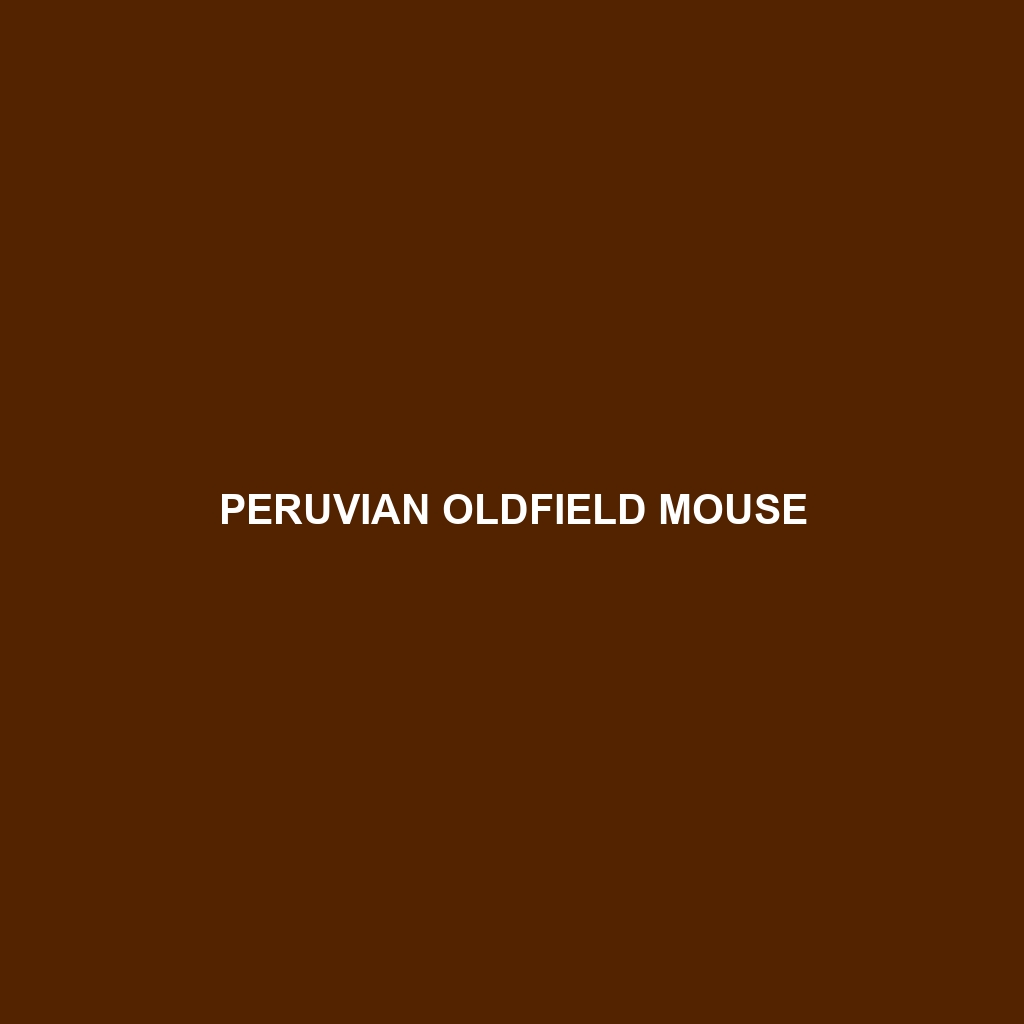Peruvian Oldfield Mouse
Common Name: Peruvian Oldfield Mouse
Scientific Name: Thoccomys lasiurus
Habitat
The Peruvian Oldfield Mouse is primarily found in the coastal grasslands and scrub regions of Peru. This species thrives in areas characterized by arid climates and sparse vegetation, making it well-suited to environments such as the dry forests and the open grasslands of southwestern Peru. They typically inhabit regions ranging from the foothills of the Andes to lower elevations, where they can easily find shelter from predators.
Physical Characteristics
Peruvian Oldfield Mice are small rodents, averaging about 10 to 15 centimeters in body length, with a tail that is nearly equal in size. Their fur is predominantly a sandy-brown color, enabling them to blend into their dry habitat. They possess a slightly elongated body shape, large ears, and distinctively long whiskers. The underside is lighter in color, providing a form of camouflage when viewed from above. These physical traits not only help them survive the harsh climates but also make them fascinating subjects for study.
Behavior
These mice are primarily nocturnal, showcasing increased activity during the night while remaining hidden during the day to evade predators. They exhibit behaviors such as burrowing and creating complex tunnel systems for shelter. The Peruvian Oldfield Mouse is known for its agile movement and quick reflexes, which are essential for survival in the wild. Social behaviors include communication through vocalizations, particularly during mating season.
Diet
The diet of the Peruvian Oldfield Mouse consists mainly of seeds, grains, and various plant materials. They are foragers and often cache food in their burrows for later consumption. Their feeding habits play a crucial role in seed dispersal, which is vital for the maintenance of their grassland ecosystem. This diet makes them important contributors to their habitat’s ecological balance.
Reproduction
Peruvian Oldfield Mice breed seasonally, with peak breeding periods occurring during the wetter months of the year. The typical gestation period lasts about 20 to 30 days, resulting in litters of two to five offspring. Mothers nurse their young until they are ready to venture out on their own, which usually occurs within a few weeks after birth. Notably, these mice demonstrate nurturing behaviors, often grooming and caring for their young, which enhances their survival rate.
Conservation Status
The Peruvian Oldfield Mouse is currently listed as a species of ‘Least Concern’ by the IUCN. However, factors such as habitat loss due to agriculture and urban development pose potential threats to their populations. Ongoing conservation efforts are essential to monitor their status and preserve their habitats.
Interesting Facts
– The Peruvian Oldfield Mouse is known for its impressive ability to navigate through complex tunnel systems, similar to other burrowing rodents.
– They have a unique method of communication that includes a variety of chirps and squeaks, which play a crucial role during interactions with other mice.
Role in Ecosystem
In their ecosystems, Peruvian Oldfield Mice play a significant role as seed dispersers, aiding in plant propagation, which helps maintain the biodiversity of their habitats. Additionally, they serve as prey for various predators, including birds of prey and larger mammals, thereby contributing to the food web. Their burrowing activities also enhance soil aeration and nutrient cycling, further supporting the health of their environments.
